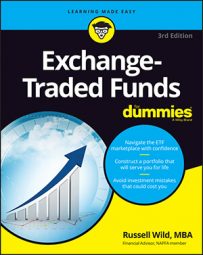You know that mutual funds, individual securities (stocks or bonds), and annuities are possible alternatives, or complements, to ETFs. But the investment world offers other options as well. Here are a few less commonly known investments, some of which may be worth considering for your portfolio:
Closed-end mutual funds: Just as the word burger without any qualifiers is usually understood to mean hamburger — not veggie burger or turkey burger — so are the words mutual fund usually understood to mean open-end mutual fund.
The vast majority of mutual funds are open-ended. That means that the fund has no set limit of shares, which are purchased from the fund sponsor. As more investors buy into the fund, the fund grows, acquiring more securities and issuing more shares.
Closed-end funds, on the other hand, are created with a certain number of shares, and that number typically doesn’t change. If any new investors want to buy in, they must buy shares from existing investors. For that reason, closed-end mutual funds, unlike open-end mutual funds, may sell shares at a premium or a discount.
ETFs may also trade at a premium or discount, but it tends to be negligible. Closed-end funds, in contrast, may sometimes be bought or sold for 50 percent more or less than the value of the underlying securities.
Closed-end mutual funds tend to be more volatile than open-end mutual funds, and the management fees tend to be higher.
Unit investment trusts: Some ETFs, especially the older ones such as the QQQ (Qubes), SPDR S&P 500 (SPY), and SPDR S&P Mid Cap 400 (MDY), actually are unit investment trusts (UITs). However, not all UITs are ETFs.
A UIT is a fixed portfolio of stocks or bonds generally sold to investors by brokers. The UIT is usually sold through a one-time public offering. It has a termination date, which could be anywhere from several months to 50 years down the road. Upon termination, the UIT dissolves.
In the case of ETF/UITs, however, it’s a slightly different story. When the first ETFs were created, there was an original termination date of 25 years hence. But as the ETFs grew in popularity, ETF providers petitioned the U.S. Securities and Exchange Commission (SEC) to make an exception, which the SEC did.
Hedge funds/Limited partnerships: Hedge funds — funds that promise insurance against bad markets — come in many different flavors and use any number of strategies to achieve (or try to achieve) their objective.
Most hedge funds are neither mutual funds nor ETFs; rather, they are organized as limited partnerships. Limited partnerships are largely unregulated, fees tend to be high, and liquidity (the ability to get your money out if you want or need to) can be very limited. Proceed with great caution.

